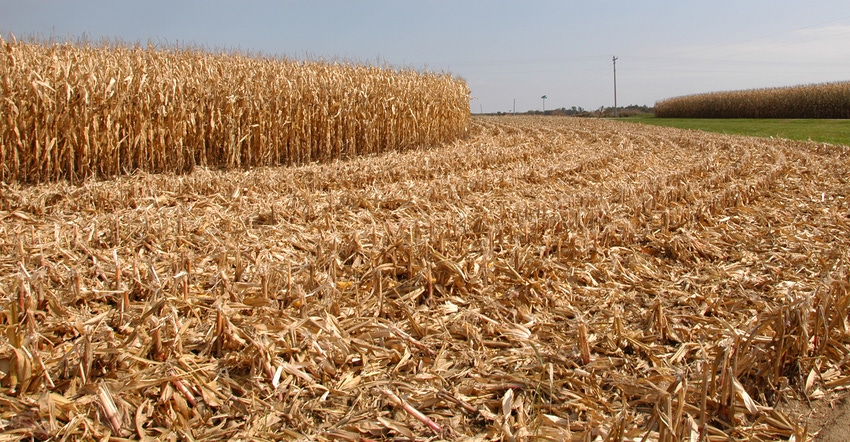
Dec. 11 is the deadline for Illinois farmers to apply for the second round of the Coronavirus Food Assistance Program at their local Farm Service Agency office. Farmers, ranchers and foresters who face continuing market disruptions and costs are eligible for payments, which are limited to $250,000 per person.
Who is eligible? FSA says eligible farms have an average adjusted gross income of less than $900,000 for tax years 2016, 2017 and 2018; or they derive at least 75% of their adjusted gross income from farming, ranching or forestry-related activities.
They also must be in the business of farming at the time of application and comply with the conservation compliance provisions of the Federal Register. Contract growers who do not share in the price risk of production are ineligible, as is anyone with a controlled substance violation.
Eligible commodities. Payments will be split into three categories of commodities: price-trigger, flat-rate and sales, according to FSA.
Price-trigger commodities suffered a 5% or greater average price decline from the week of Jan. 13 to the week of July 27. Commodities in this group include corn, soybeans, dairy, hogs and pigs, wheat, sunflowers and more.
Flat-rate crops either do not meet the 5% price decline trigger or do not have data available to calculate a price change. Flat-rate crops include, but are not limited to, alfalfa, millet, hemp, oats and buckwheat.
Sales commodities include tobacco, goat milk, nursery crops, wool, fruit, vegetables and more.
Except for alfalfa, hay and crops that farmers intended to graze are ineligible for CFAP 2 and will not receive a payment. Crops that farmers intended to use as green manure are also ineligible. Examples of ineligible crops include forage soybeans, vetch and sunn hemp.
Price-trigger payments. For barley, corn, sorghum, soybeans, sunflowers, upland cotton and all classes of wheat, payments will be based on the eligible 2020 acres of the crop, excluding prevented planting and experimental acres.
FSA explains that payments for price-trigger crops will be the greater of either: the eligible acres multiplied by a payment rate of $15 per acre, or the eligible acres multiplied by a nationwide crop marketing percentage, multiplied by a crop-specific payment rate, and then by the producer’s weighted 2020 actual production history yield. If production history isn’t available, then 85% of the 2019 Agriculture Risk Coverage-county option can be used.
For broilers, payments will be equal to 75% of the producer’s 2019 broiler production multiplied by the payment rate of $1.01 per bird. Payments for eggs will be equal to 75% of the producer’s 2019 egg production multiplied by the Commodity Credit Corporation payment rate.
Dairy payments will be equal to the sum of the following: the producer’s total actual milk production from April 1 to Aug. 31, multiplied by the payment rate of $1.20 per cwt, plus the producer’s estimated milk production from Sept. 1 to Dec. 31, multiplied by a payment rate of $1.20 per cwt.
For price-triggered livestock, payments are based on a fixed number of head, which is defined as the lower of: the highest maximum owned inventory of eligible livestock, excluding breeding stock, on a date selected by the eligible producer from April 16 through Aug. 31; or the maximum number of livestock. Payment rates for beef cattle are $55 per head, hogs and pigs are $23 per head, and lambs and sheep are $27 per head.
Flat-rate, sales payments. According to FSA, payments for flat-rate crops will be calculated by multiplying the producer’s share of reported 2020 planted acres of the crop, excluding prevented planted and experimental acres, by $15 per acre.
For sales commodities, payments will be calculated using an approach based on five payment gradations associated with the producer’s 2019 sales. The sales range percentage factors are as follows:
up to $49,999 gets 10.6%
$50,000 to $99,999 gets 9.9%
$100,000 to $499,999 gets 9.7%
$500,000 to $999,999 gets 9%
all sales over $1 million get 8.8%
So if a producer’s 2019 sales of eligible commodities totaled $75,000, the payment is calculated as $49,999 multiplied by 10.6%, plus $25,001 multiplied by 9.9%. This equals a total payment of $7,775.
Producers interested in one-on-one support with the CFAP 2 application can call USDA at 877-508-8364 or contact their local FSA office.
For more on CFAP 2, check out FarmdocDaily’s report in the Gardner Policy Series.
Read more about:
Covid 19About the Author(s)
You May Also Like




